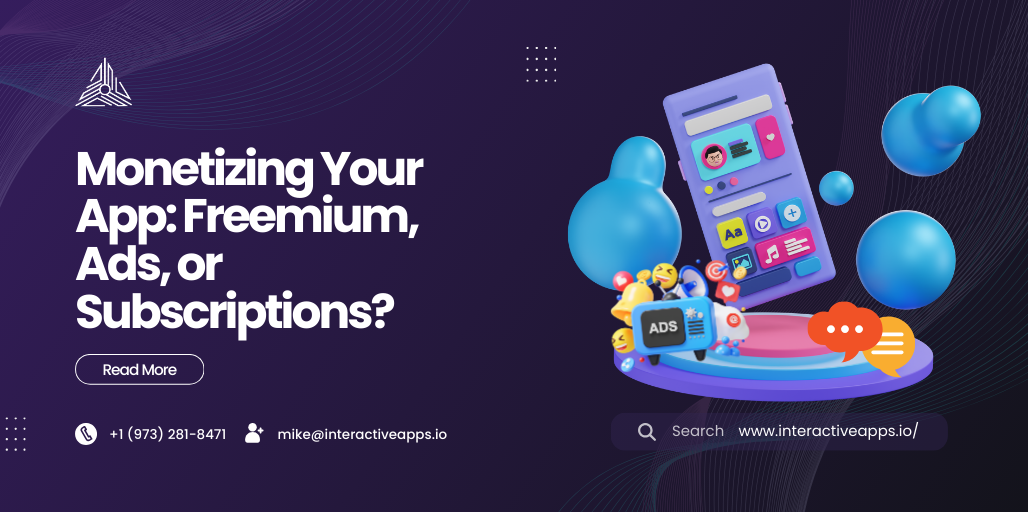There’s no single right answer when it comes to making money from an app. Some developers strike gold with subscriptions. Others rake it in through ads. Many lean on the freemium approach, offering free downloads and then selling extras inside.
The question is: What works best now?
A lot has changed. People expect more. They’re more cautious about what they pay for and how. App stores are flooded. Competition is brutal. But that’s not a bad thing. It just means choosing a model takes more thought.
Let’s walk through it all. The numbers. The trends. The good, the bad, and the odd in-between. This is a straight-up, no-fluff look at how apps are making money today—and what that could mean for yours.
What’s Happening in the App Economy Right Now?
Before picking a model, it helps to know the landscape.
In 2025, global app revenue crossed $500 billion, with mobile games still leading the pack. But non-game apps are catching up fast. Health, education, finance, entertainment—they’re all pulling serious weight now.
The average smartphone user has over 80 apps but actively uses only about 10 daily. Most downloads come from social recommendations or app store visibility, not ads.
User spending on mobile apps continues to grow year over year. Subscriptions account for nearly 80% of revenue in non-gaming apps on iOS and about 60% on Android. Ads are still king in free apps, especially in emerging markets.
So what does this mean for monetization?
Simple: people don’t mind paying. But they want clear value. They want to know what they’re getting and why it’s worth it.
The Freemium Model: Let Them In for Free, Then Show Them More
Freemium is everywhere. It’s the gateway drug of app monetization. Think Spotify. Think Duolingo. It’s free to get started. You use it. You like it. Then you’re offered extras.
Those extras could be anything—unlocked features, more storage, or ad-free browsing.
Why Freemium Works
This model builds trust before asking for money. And trust leads to loyalty.
People are more likely to pay once they’re already hooked. Freemium also lowers the barrier to entry. No one wants to drop cash on something they haven’t tried.
According to Sensor Tower, freemium apps dominate the top-grossing charts in both app stores. More than 90% of top apps in health and productivity use some form of this model.
Another reason freemium thrives? It feeds on scale. If 1 in 20 users pay, and you’ve got a million users, that’s still 50,000 paying customers.
Where It Falls Short
It’s a double-edged sword. Most users never pay. Your app needs to be sticky. It needs to keep people coming back.
Support costs go up. Server costs climb. And if upgrades don’t feel valuable, you lose the upsell.
You also risk alienating free users if they feel too limited. Striking that balance is tricky.
Ads: Money From Attention
Ads are the most straightforward route. People use your app for free. You earn from their attention.
It’s the bread-and-butter model behind casual games, news apps, and many utilities.
Why Ads Still Work
They require zero commitment from the user. No sign-up. No card details. Just show up and use the app.
With enough users, even low returns per person can add up. In 2023, ad revenue from mobile apps topped $400 billion globally. That’s no small slice.
Interstitials, banners, native ads, and reward videos—there are plenty of ways to blend them into an experience.
Reward ads in particular (watch this video, earn a bonus) have strong engagement, especially in games. Unity reported that rewarded videos can increase retention by over 20% when used well.
The Downsides of Ads
Too many ads turn users off. Badly placed ones frustrate people.
There’s also platform reliance. You need decent traffic. If you’re not driving daily active users in the thousands, ad revenue stays small.
Privacy laws also add pressure. Users are more wary of tracking. iOS privacy changes reduced ad effectiveness by almost 40% for some apps. Android is expected to follow suit.
So, while ads offer fast revenue, they’re not a long-term play unless volume is your game.
Subscriptions: Predictable Money, Loyal Users
This model is built for sustainability. Think Headspace, Netflix, and Notion. You offer access, not ownership. And you charge at regular intervals—weekly, monthly, or yearly.
Why Subscriptions Are Exploding
It’s predictable. For both the developer and the user.
The App Store’s subscription revenue jumped 35% last year. On iOS, more than 80% of the top non-gaming apps use subscriptions.
This model works best for services people use regularly. Meditations. Workouts. Journaling. Learning.
Retention is gold here. The longer someone stays, the more valuable they become. That’s why many subscription apps offer free trials—so users can get hooked before being charged.
Another strength? Better alignment. You improve the product, users stick around. Everyone wins.
Challenges of Subscription Models
There’s friction. People hesitate before committing. Churn is real. Average subscription retention past 90 days is under 30%.
There’s also a growing pushback against “subscription fatigue.” From gym apps to cloud storage, everything asks for a monthly fee. Users are starting to feel it.
You’ll need to offer constant value. Updates. Support. Content. It’s a relationship, not a one-off sale.
Picking the Right Model: Think About Use, Not Just Users
It’s easy to chase trends. But monetization isn’t about copying. It’s about alignment.
What’s the core experience? How often will people use it? Is it a tool? A habit? A one-time thing?
Here’s a quick breakdown:
Good Fits for Freemium:
- Apps with feature tiers (editing tools, design apps)
- Communities or marketplaces (networking, dating)
- Habit-building apps with extras (language learning)
Best for Ads:
- High-volume, low-depth usage (games, media, meme tools)
- Utility apps with short session times
- Emerging market apps with wide reach
Ideal for Subscriptions:
- Regular-use services (fitness, productivity)
- Content platforms (news, video, audio)
- SaaS-style apps with ongoing improvements
Hybrid models also work. Some apps combine all three. Free core, ads for bonus content, and a paid tier to remove ads or unlock more. It takes finesse, but it can work well.
Real Examples: Who’s Doing What (and How It’s Going)
Canva
Uses freemium with paid tiers. Over 100 million users, with paid plans starting at $12.99/month. Their success came from offering tons of free value up front, then layering features for power users.
Calm
Subscription-based. Generated over $200 million in 2023. Offers guided meditation with new content each week. The free tier gives just enough to showcase the value of going premium.
TikTok
Free with ads. Also started pushing paid subscriptions for ad-free viewing and tipping creators. In 2023, TikTok earned over $10 billion from ad revenue alone.
Duolingo
Classic freemium. Most use it for free. Some pay to remove ads or unlock unlimited lessons. In 2023, it had 5 million paying users, up 59% from the year before.
Each found a model that matched user behavior—not just their market.
Common Pitfalls to Avoid
- Starting with pricing instead of product. If the app isn’t useful, no model saves it.
- Forcing payment too early. Let users explore before the pitch.
- Over-relying on ads without volume. You need a real user base for decent ad revenue.
- Overpricing. Be realistic. Small, recurring amounts work better than upfront price walls.
- Ignoring churn. Keep your subscribers engaged, or they’ll disappear fast.
So, What Should You Do?
There’s no plug-and-play answer. But here’s a practical way to think through it:
- Map your user journey. When and why will people come back?
- Look at your market. What do your competitors charge? How?
- Build trust first. The longer someone uses your app, the more likely they’ll pay.
- Test small. Try multiple models on a limited group. See what sticks.
- Listen to feedback. What do users ask for most? What annoys them?
And remember: your model can evolve. Many apps start with one path, then shift as they learn.
The Bottom Line
Whether it’s freemium, ads, or subscriptions, every monetization strategy is a bet on behavior. You’re not just selling an app. You’re selling time, convenience, solutions, or entertainment.
Make it easy to try. Make it worth paying for. Then, let the numbers guide you. Chances are, the answer isn’t just one model. It’s a mix. A balance. A system that rewards both your users and your effort.



